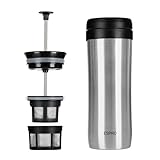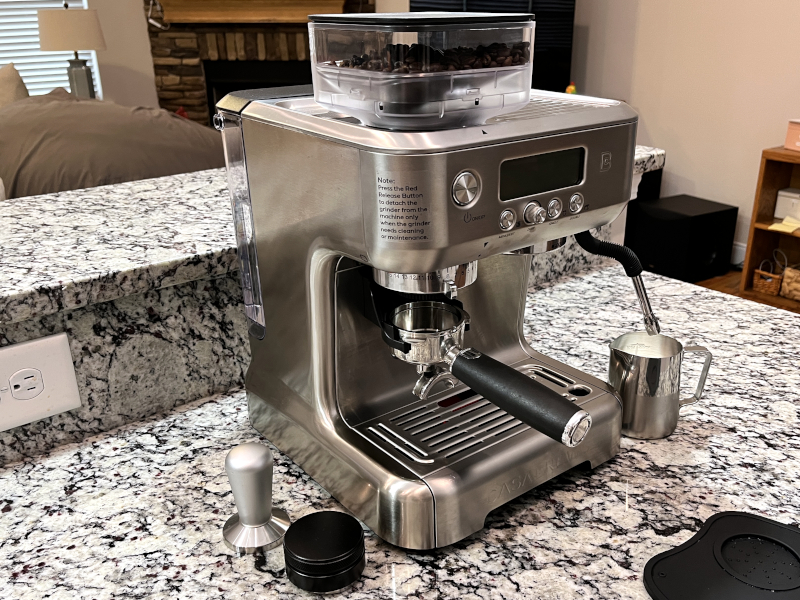
REVIEW – Summer is almost here, and that means it’s time for more cold coffee drinks. I’m looking to perfect my skills by creating iced versions of drinks like lattes, mochas, and macchiatos. I have a few recipes that I want to try, and they all require shots of espresso. It’s time to find out if Casabrews’ newest espresso machine is the right gadget to help me make my summer drinks.
What is it?
The Casabrews 5700 Pro is an espresso machine that features a built-in grinder and a steamer. Casabrews is a new brand that “creates innovative coffee machines that present clean, streamlined appearances, easy-to-use mechanics, and rich flavors.”
What’s in the box?
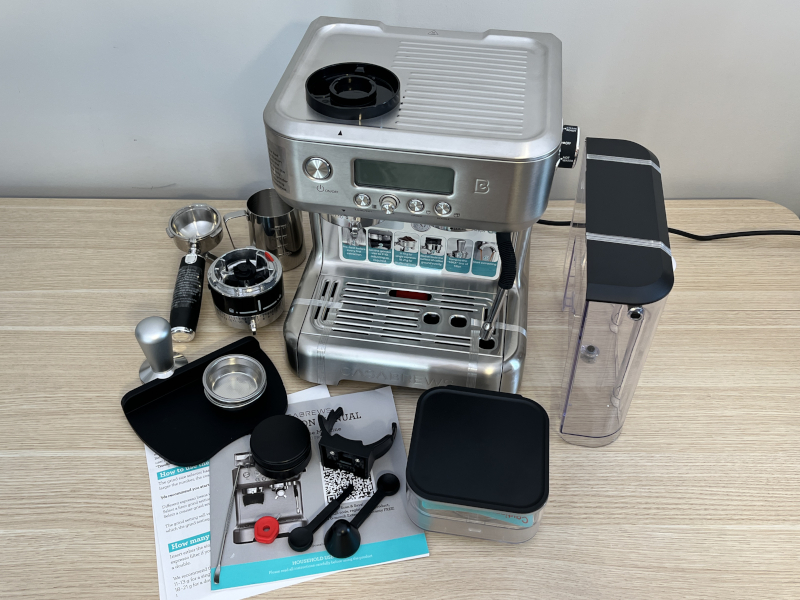
- Casabrews 5700 Pro Espresso Machine with bean container, water tank, and two grinders
- Portafilter with single and double filter
- Distributer and tamper
- Tamping mat
- Small milk jug
- Coffee scoop
- Decorating pen
- Cleaning brush and needle
- Instruction manual and operation guide
Hardware specifications
- Pump pressure: 20 bars
- Grind settings: 15 levels of granularity
- Dimensions: 16.5 x 12.8 x 11.2 inches
- Weight: 20.9 lbs
- Bean container capacity: 0.4 gallons
- Water tank capacity: 2.7 liters
- Length of power cord: 1 meter
Design and features
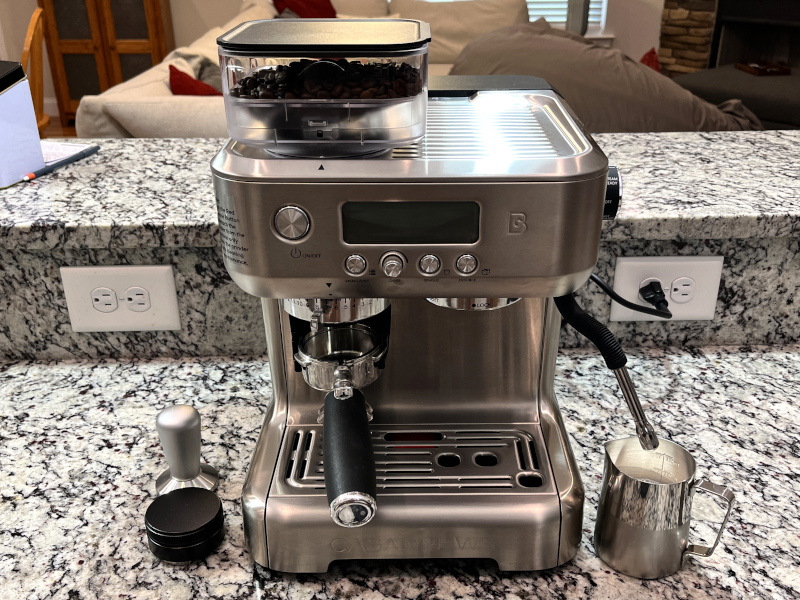
The Casabrews 5700 Pro looks very similar to other espresso machines that have a grinder and steamer. The coffee beans are held in a plastic container on top of the machine. There’s a row of controls on the front, the grinder is on the left, the brew head is on the right, and the steam wand hangs off the right side. This gadget is mostly made of stainless steel, giving it a more professional look than other machines that feature a lot of plastic. The water tank rests on the back, which gives it a cleaner look, but will make it harder to refill, especially if the machine will sit on a counter under some cabinets. This gadget is surprisingly heavy and consumes a fair amount of counter space.
Installation and setup
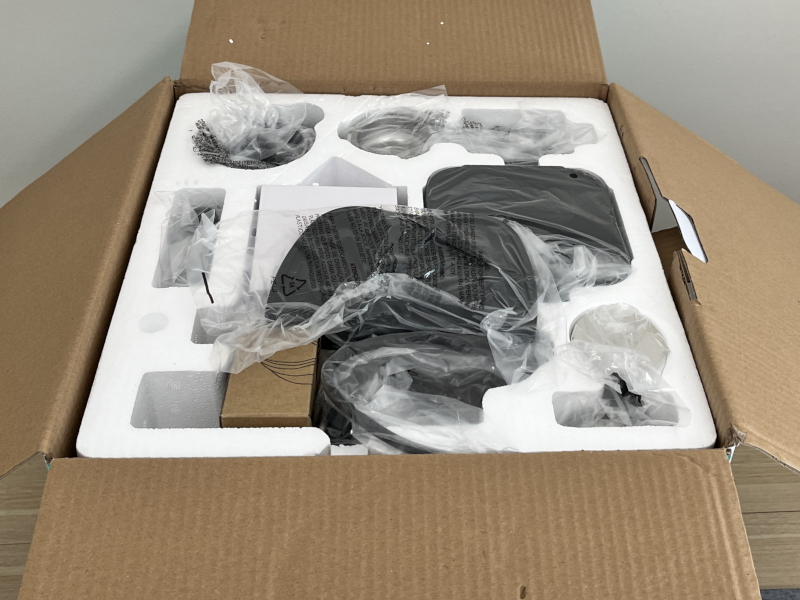
I opened the box and found everything was well-protected. I removed everything from the packaging. I then read through the manual. For the most part, the English is good and the manual is clear. There are, however, several places where it uses different words for the same thing or forgets to label parts of a drawing. Experienced baristas will have no problem navigating through these mistakes, but newcomers might struggle a bit.
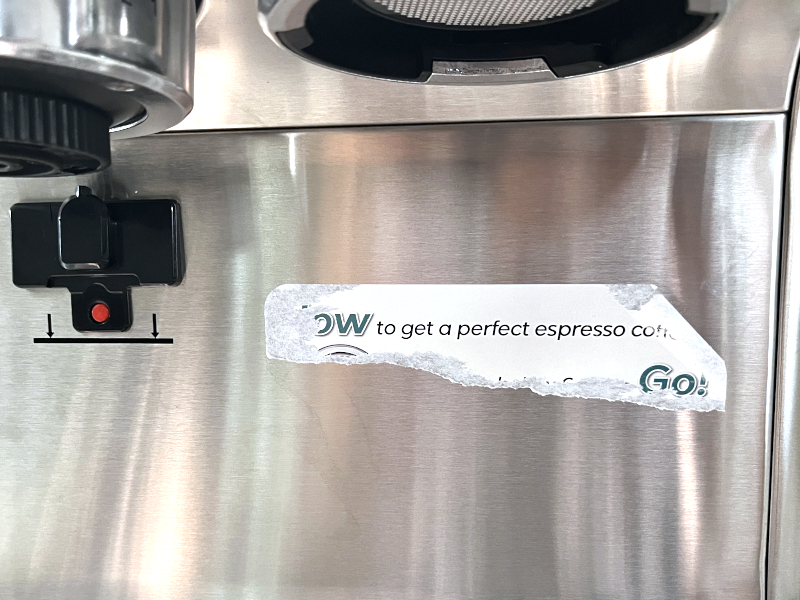
I washed the water tank, bean container, portafilter, milk jug, and anything else that might touch the beans or the espresso. I then removed the many annoying stickers that Casabrews stuck all over the machine. (Please, no more stickers!)
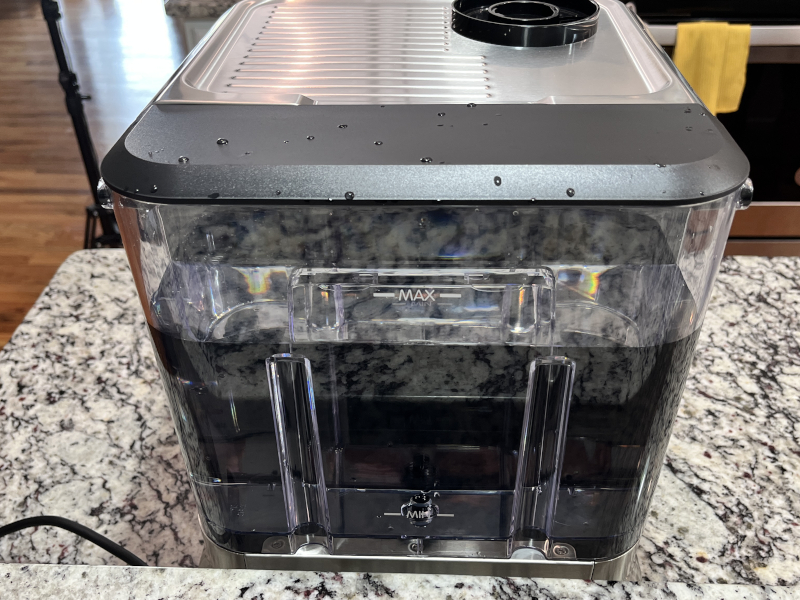
I filled the water tank and attached it to the back.
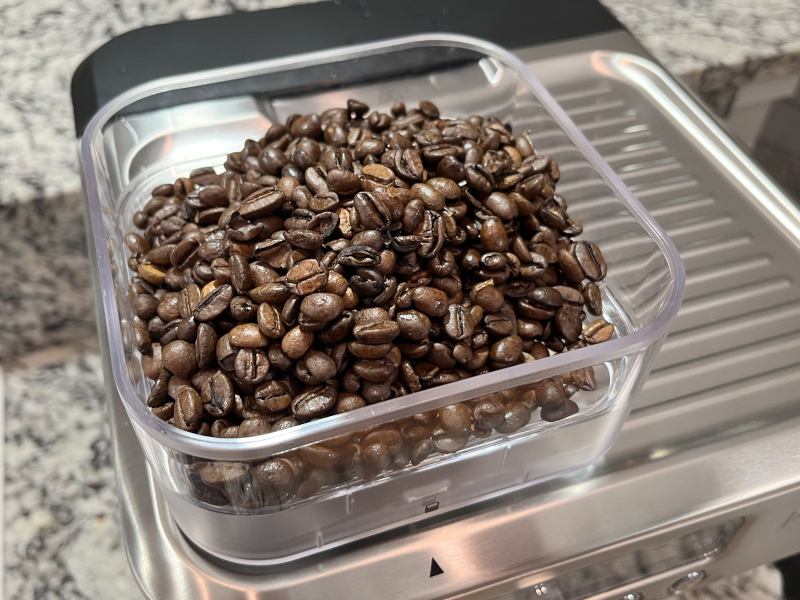
I put the bean container on top but found that aligning everything correctly was harder than it should have been. It took me several minutes to get it right. I then filled it with beans.
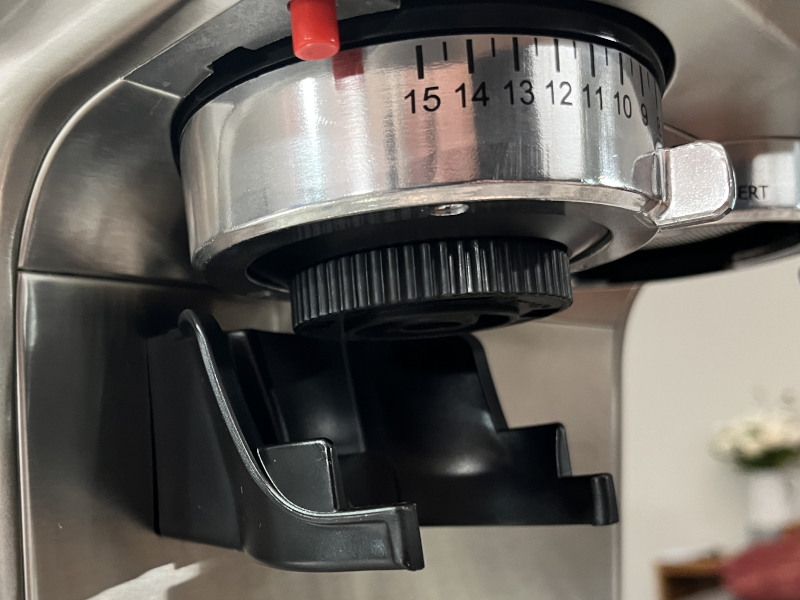
I attached the bracket that holds the portafilter in place. This piece is made of plastic, and I think it’s weak link in the chain. It’s very flexible, and I suspect that over time it will stretch out and stop holding the portafilter securely. Only time will tell.
The Casabrews 5700 Pro Espresso Machine manual recommends running through the process of brewing an espresso once, just to rinse out the machine and prime the heating system. I did this, and then it was ready for brewing!
Performance
Each of the drinks that I want to make uses one or more shots of espresso, so it’s time to put the 5700 Pro to the test. For my drinks, I am using Lavazza’s Espresso Italiano Whole Bean Coffee and following the instructions for making espresso found in the manual.
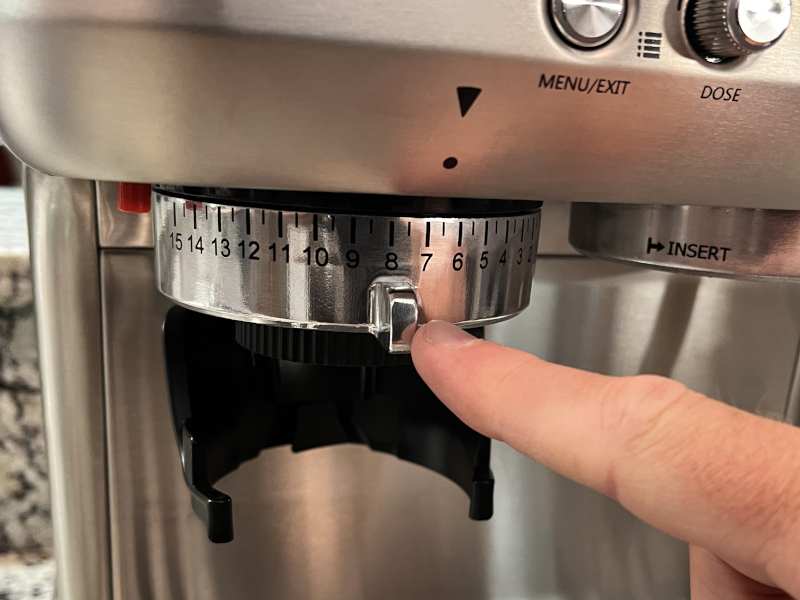
First, I selected the grind. Higher numbers give courser coffee grinds and thus weaker coffee, while lower numbers give finer grinds and thus stronger. The default setting is 8, but I found that 6 worked better for my Lavazza coffee beans.
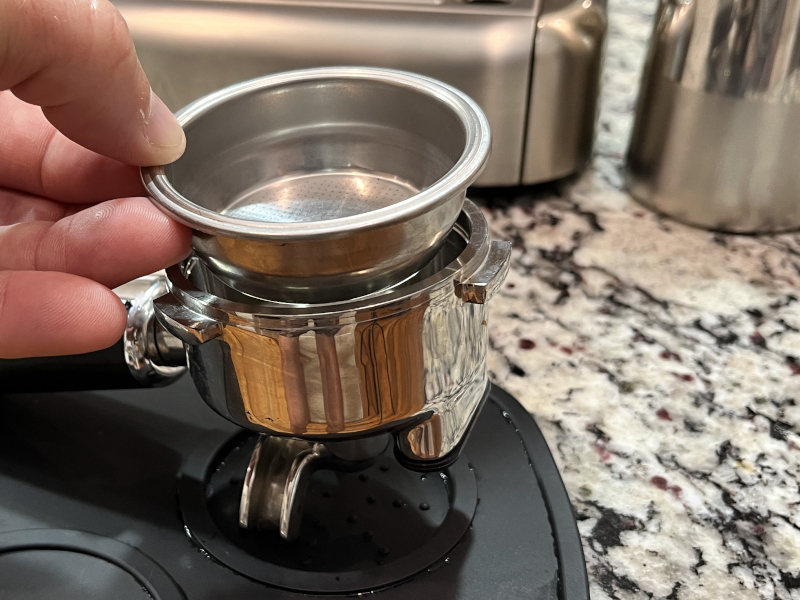
The Casabrews 5700 Pro Espresso Machine can make a single or double shot of espresso, so the second step is to insert either the smaller or larger filter into the portafilter. These constrain the total amount of coffee grinds that will be used to make the espresso.
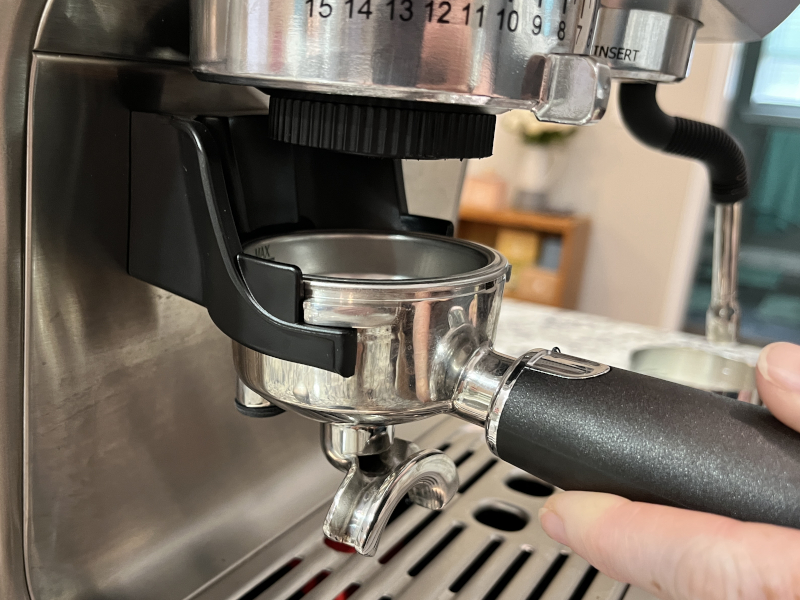
Third, I set the portafilter into the bracket under the grinder on the left side of the machine. At the back of the bracket is a button, and when I pushed the portafilter handle forward, it’s supposed to push the button and start grinding the coffee. This is the most irritating feature on this gadget, as it is difficult to figure it out. There’s a trick where I have to insert the portafilter at just the right angle and push forward at just right time. Once it’s figured out, it’s fine, but it was a source of frustration initially. I think this part of their machine could be redesigned to work easier.
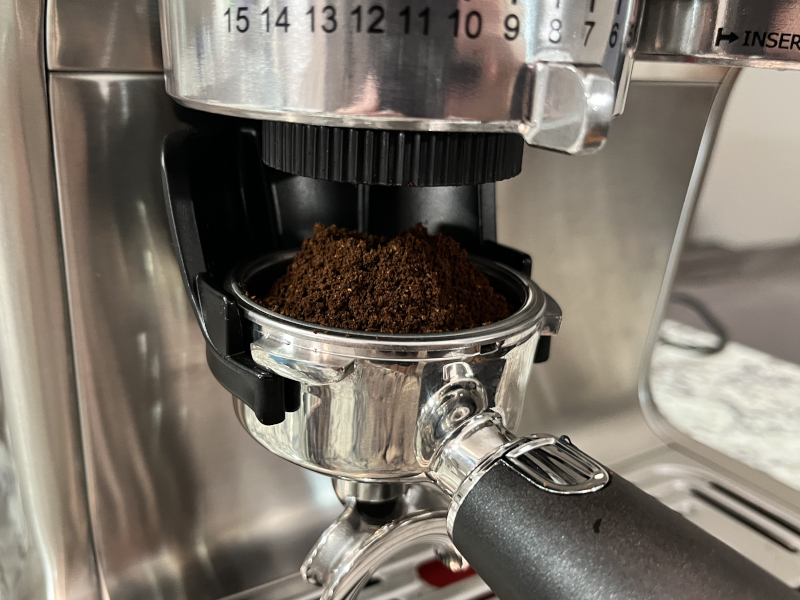
Once I finally manage to press the button, the grinder grinds the coffee and deposits it into the portafilter. It appears like it’s going to overflow, but it never does.
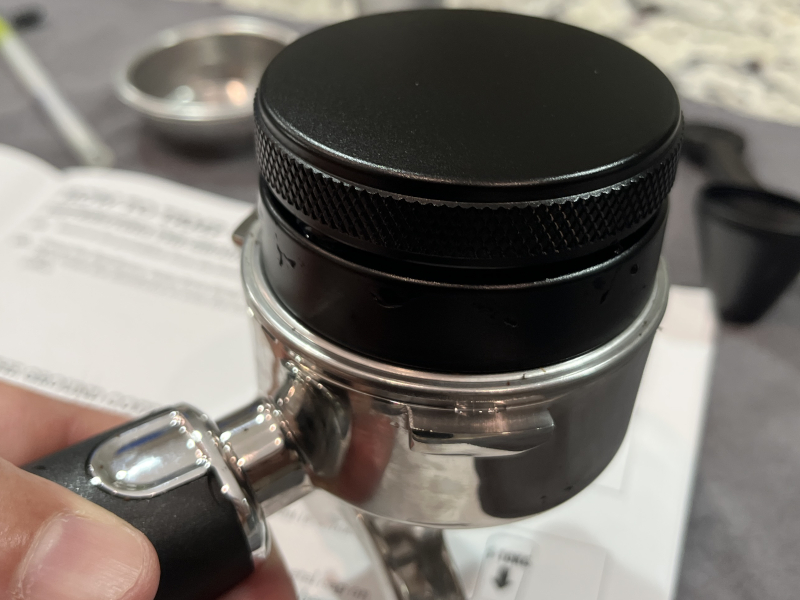
Fourth, I placed the distributor onto the portafilter, which tamps it down some.
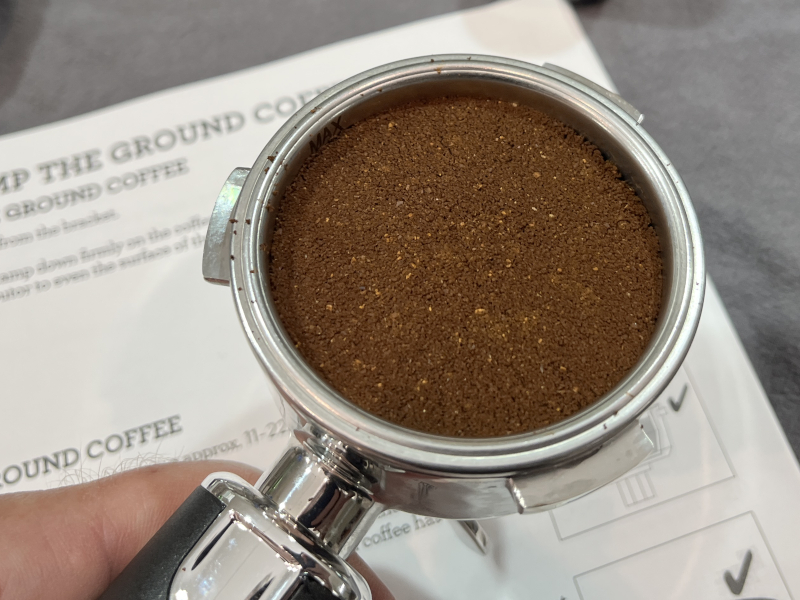
Fifth, I rotated the distributor to level the coffee.
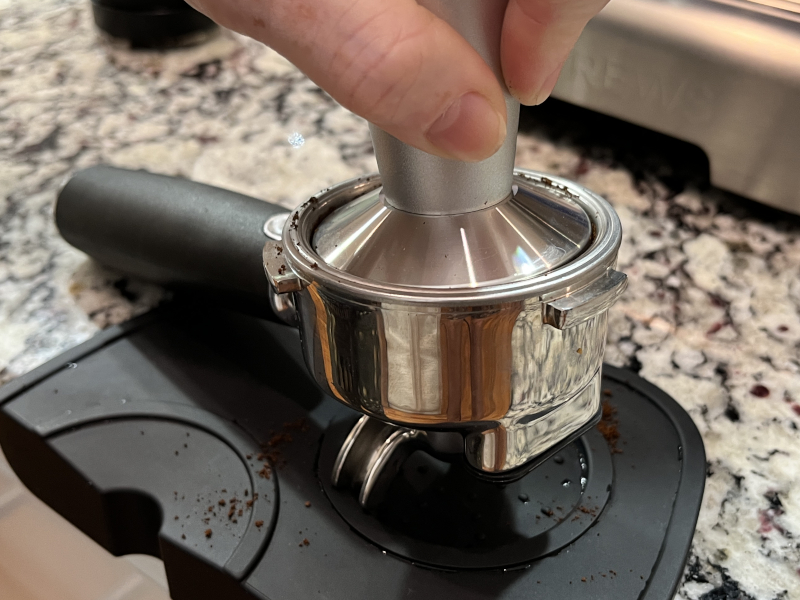
Sixth, I placed the portafilter on the tamping mat and used the tamper to press down hard, forcing the grinds to be below the max line inside the filter. At this point, the coffee grinds are ready for making the espresso.
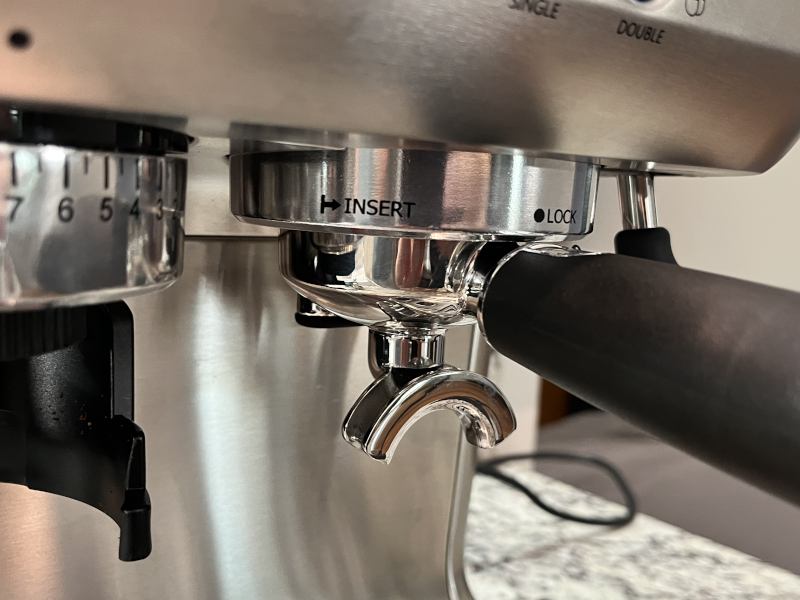
Seventh, I insert the portafilter beneath the brew head on the right side and locked it in place. Casabrews recommends pre-warming my cup before I place it under the portafilter, though this isn’t very important for cold drinks.
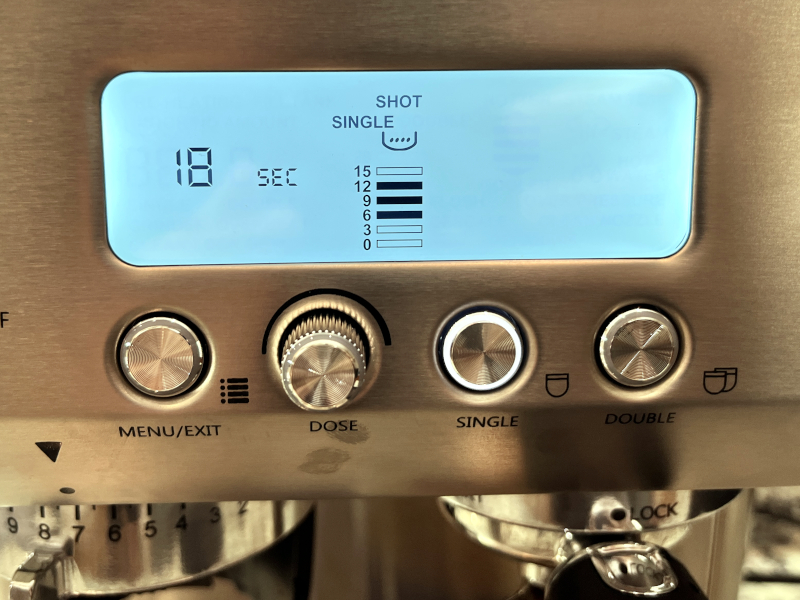
To start brewing with the Casabrews 5700 Pro Espresso Machine, I either select the single or double button. While it’s brewing, I need to pay attention to the display and to the espresso flowing out of the portafilter. The manual does a nice job of explaining how to know if the machine is using the right amount of pressure and if the espresso is flowing properly and looks right. The goal is to avoid making espresso that is under or over extracted, as neither will taste right. The manual gives multiple options for solving these problems, and I’m grateful for these details that Casabrews added, as it took me a few tries to get it right.
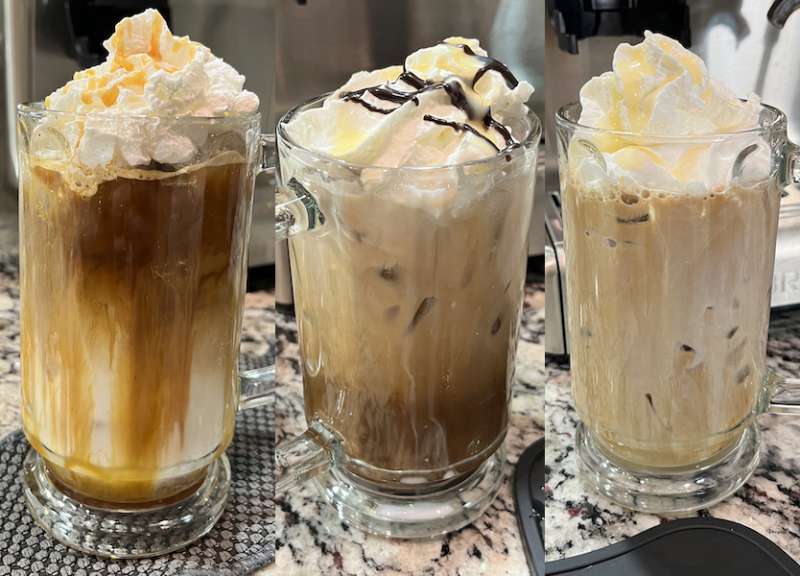
From left to right, here are the three cold coffee drink recipes that I tested:
- Iced Caramel Macchiato — Line a glass with caramel sauce. Add ice to the cup. Add 4 pumps of vanilla flavor. Add milk, leaving about 1 inch of space to the top. Pour over 3 shots of espresso. Add caramel drizzle to top.
- Iced Black and White Vanilla Latte — In a large glass, combine two pumps of white chocolate syrup with two pumps of dark chocolate syrup. Pour in three shots of espresso. Add 3 pumps of vanilla syrup. Add cold milk and then ice cubes to fill the glass.
- Iced White Chocolate Mochas – This is a CopyKat recipe based on Starbucks.
How did they taste? Fabulous! These are perfect drinks for warm summer days, and they are certainly a whole lot cheaper than buying them from Starbucks.
Extra Features
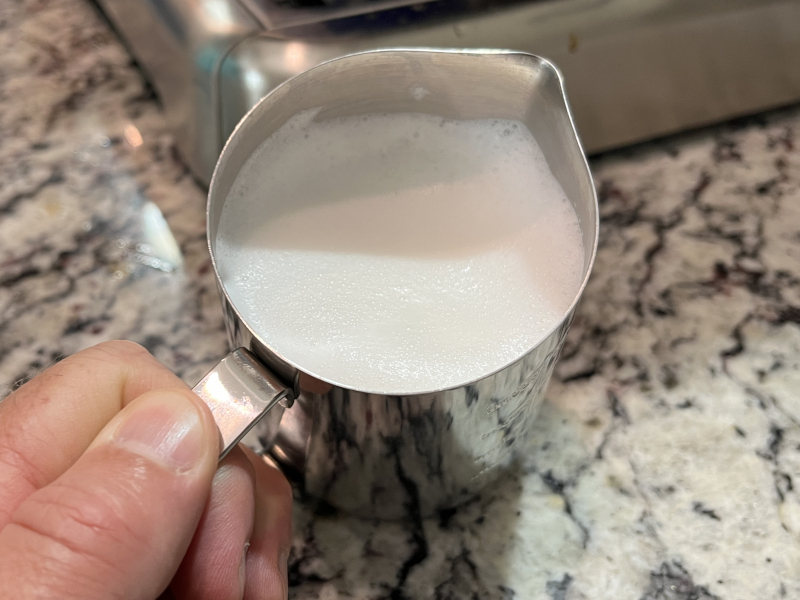
The steam wand on the right side of the 5700 Pro can be used to froth milk and create hot water. Though neither of these are required for iced drinks, I tested both using the instructions in the manual and found that they worked as expected.
The manual also contains a fairly detailed section on how to take care of the espresso machine, including how to descale it and clean the grinder.
What I like
- Nice stainless-steel look
- Delicious espresso
- Multiple options to ensure espresso is not under/over extracted
- Spare grinder
What I’d change
- Change the grind button to work easier
Final thoughts
The Casabrews 5700 Pro espresso machine can grind coffee beans, make espresso, and froth milk. It has settings to grind more or fewer beans as well as grind them finer or courser, and it can make a single or double shot. Getting the portafilter to press the grind button is a bit annoying, but once you know the trick, it’s okay. Other than that detail, I had no problems using the 5700. My wife and I have enjoyed many fine glasses of iced coffee specialty drinks this summer, and I suspect we’ll enjoy many hot ones next winter. If you’re in the market for a nice espresso machine, I recommend taking a look at the Casabrews 5700 Pro.
Price: $499.99 on Amazon, $519.99 on Casabrews
Where to buy: Amazon or Casabrews’ online store
Source: The sample for this review was provided by Casabrews.

